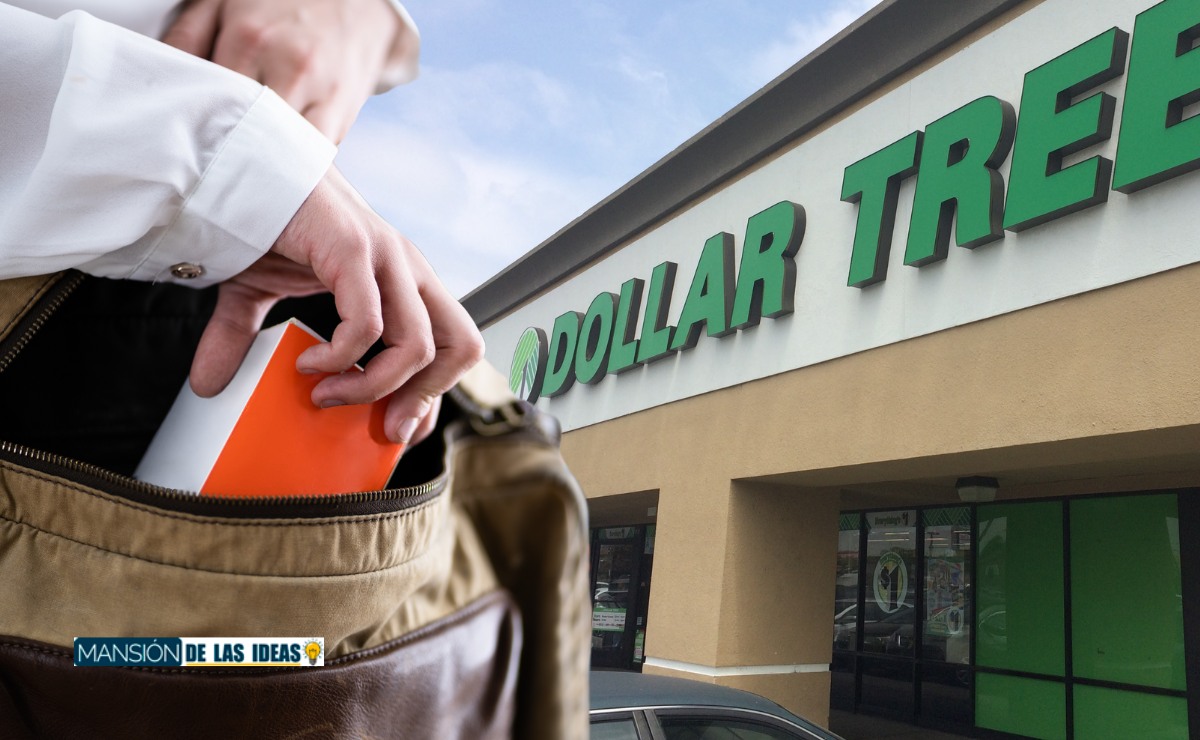The problem of shoplifting has become a severe crisis in the United States, but it is not only a loss for companies, but it is a headache for customers. As thieves advance with their new techniques and learn how to steal from supermarkets in different ways, or even at self-checkout kiosks, the measures are being tightened. All this complicates your shopping experience, and the new place where you are going to see imprisoned products (yes, as if they were criminals) is at Dollar Tree.
The people at Dollar Tree have noted an increased “shrink” as one reason why the company saw earnings lower than expected. In retail, “shrink” is the difference documented between the number of items a store has according to its records and the number it actually has on hand. It can include theft as well as more benign reasons, such as products expiring on the shelf. In this case, there might be an increment in theft, and that’s a serious situation also for costumers like you.
This is how Dollar Tree is trying to stop shoplifting using cages
As one of the leading discount store chains in the United States, it is expected that Dollar Tree became a target for the thieves. The company is currently exploring the idea of locking up certain products in order to combat the persistent issue of shoplifting. This move comes as a response to the rising concern of theft, which poses a significant challenge to many retailers. By implementing locked displays or requiring assistance from store employees, Dollar Tree aims to create a deterrent for potential shoplifters.
Dollar Tree is having a hard time stopping at-store shoplifting.By securing high-value or easily concealable items behind locked displays, it becomes more challenging for shoplifters to snatch them unnoticed. This can act as a deterrent, as thieves are less likely to target products that require additional effort to access.
Locking up products allows for better monitoring and surveillance. Most of the items locking systems used in the United States include noisy alarms or ink bombs. Have you seen those transparent cages with certain medications or vitamins at Walmart? Well, if you open them without having paid, they will make a loud noise and, in seconds, you’ll be surrounded by security guards that will escort you right to the police patrol.
These are the most common shoplifting techniques used by thieves
One prevalent shoplifting technique is the infamous “grab and dash.” This technique involves swiftly snatching a desired product and making a hasty exit from the store, all before anyone can react. The element of surprise and speed makes it incredibly challenging for store employees to catch the perpetrator in the act. Shoplifters who employ this method often target high-value items that are easy to grab and conceal.
Another technique that plagues supermarkets is under-ringing or “sweethearting.” This method relies on collaboration between a shoplifter and a cashier. The cashier deliberately undercharges the shoplifter’s accomplice for a product or, in some cases, fails to scan it altogether. This enables the accomplice to obtain the item at a significantly discounted or even free price.
Price tag switching is another tactic employed by crafty shoplifters: it’s known in the underworld of thieves as the “banana trick”. This technique involves replacing a product’s original price tag with a lower-priced one (like a banana, hence the name). By doing so, the shoplifter creates a misleading perception of the item’s value, leading to an undercharge or even theft if the discrepancy goes unnoticed. Shoplifters frequently target items with similar packaging or those that are easy to swap, further complicating the detection process for store employees.

